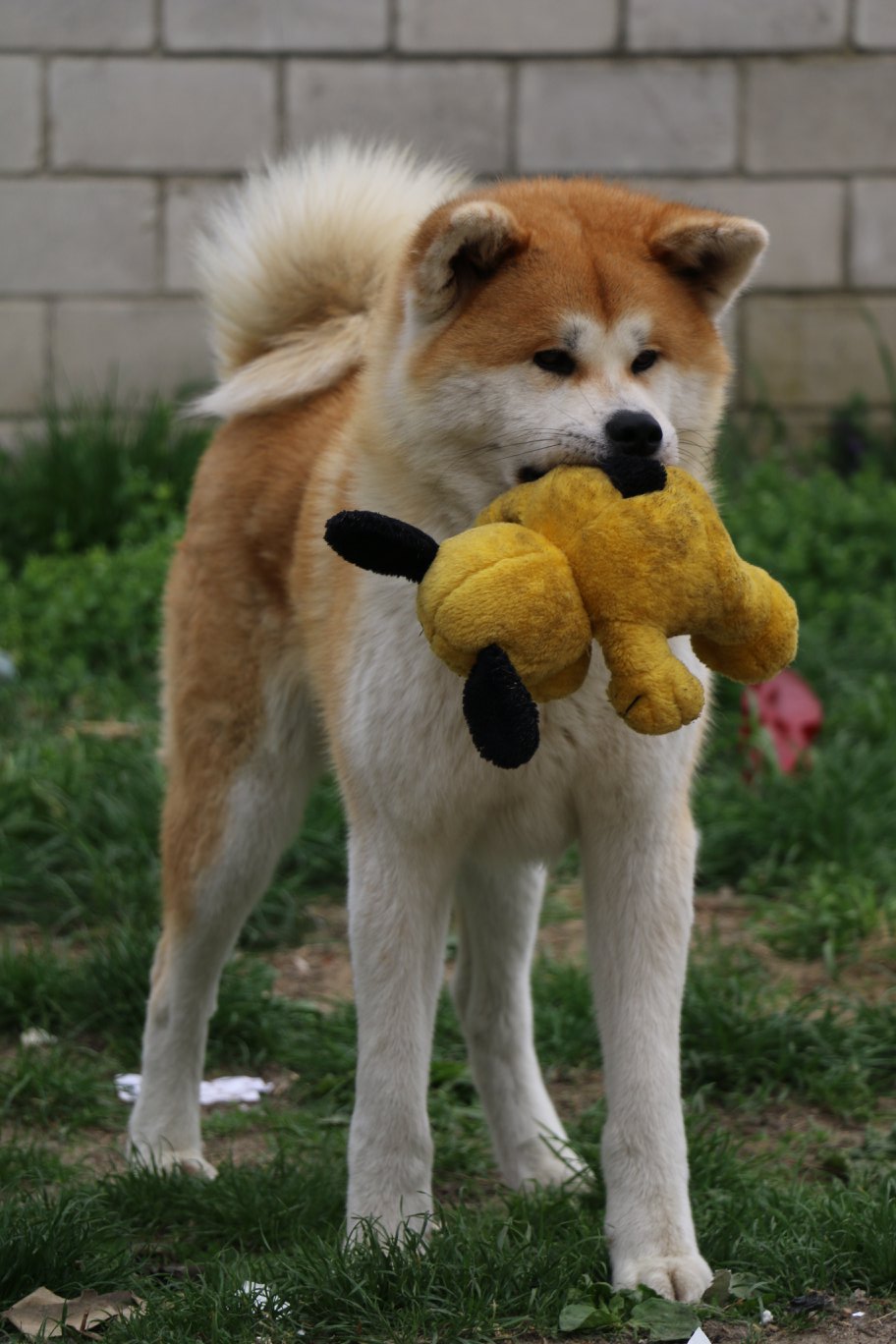Akita in Slovakia
Modern history of Akita inu (mostly speaking about the first half of the 20th century) has not been really simple, it has had quite some twists and turns (few of them being really scary) which inevitably had an impact on the breed as we know it today.
Until 1999 FCI had recognized only one Akita breed. Although for years there have been very clear external differences that virtually divided official "members" of the former Akita breed into two different types, FCI did not formally acknowledge these typologically different dogs until 1999 and thus it was normal to see in the show ring animals with completely different exterior and phenotypes that hardly resembled the same dog breed. That, of course, did not make any sense to the breeders, owners and Japanese dog enthusiasts. How can we possibly (and objectively) judge pears and apples in the same ring?

The Japanese wanted to define a clear line between these different types of dogs and thus acknowledge the original Japanese Akita dog type - their national monument - which they had vigorously (and eventually successfully) tried to recover and protect for decades after they almost disappeared from the surface of this world.
One of the officially communicated reasons for the split of the breed was in perception of two different terms : country of origin and country of development. While the Japanese (JKC - Japanese Kennel Club) agreed with Japan being the country of origin for both types, they pointed to the USA being a country of development of the sturdier, more molossoid then Great Japanese Dog.
Based on the Japanese insisting on the breed split, on the 1st July 1999 in Mexico City the council of FCI general assembly made an important decision and split the Akita into two separate breeds with effect from 1/1/2000):
The Great Japanese Dog - in FCI nomenclature being in II. Group (Pinscher and Schnauzer - Molossoid and Swiss Mountain and Cattledogs) in a separate section 4 with catalogue number 344.
Akita - remained in V. Group (Spitz and primitive types) with catalogue number 255.
The above mentioned decision meant that each FCI member country (including Czechoslovakia), it was necessary to screen all former Akitas and re-register them accordingly.
Based on the instructions and recommendations from JKC, basic decision factor for determination to which breed a dog shall belong was the exterior - phenotype of the animal, and then the pedigree. Evaluation would be performed by 3 members of the committee and in case when they were not able to determine the right classification, JKC promised to provide support of their own experts.
Practical application of splitting looked a bit differently across countries, which is captured in the notes of former ACA (Akita Club of America) president Lonny Cohen from the World Akita Conference in July 2000.
In Slovakia (formerly Czechoslovakia) it took the following path:
SKJ (Slovak Cynological Federation) which is a national organization under FCI, in cooperation with SKSJP (Slovak Club of Northern and Japanese Dogs) which covers Akita breeding in Slovakia, contacted all owners of officially registered Akitas, informed them about the FCI decision and passed instructions for how the categorization will be done
3 appointment dates were announced during which dog owners were supposed to physically present their dogs for evaluation
Evaluation committee was created out of 3 international FCI judges and after the evaluation, the following actions were taken:
Dogs with exterior classified as significantly converging to the standard of The Great Japanese Dog got the Pedigree stamped with the name of the new breed - The Great Japanese Dog.
Dogs evaluated as Japanese Akitas got the written confirmation of evaluation with result remaining the Akita.
Back then there was a rule (which has been already overcome long time ago) that pedigree was provided only to the animals that were after birth acknowledged by the club's "breed advisor" (note: in Slovak it is called "poradca chovu") responsible for the breed as matching the breed standard. Thus there were puppies that descended from parents with pedigree, but they themselves did not get it (it was usually dogs looking more of today's American Akita that did not comply with Japanese Akita standard - e.g. had black mask, pinto color or did not have urajiro).
During reclassification sessions, also these dogs without pedigrees were evaluated and in certain cases (when acknowledged by the committee as sufficiently complying with the standard of The Great Japanese Dog) they were entered into the so-called "auxiliary register" (note: in Slovak it is called "pomocný register") under The Great Japanese Dog breed.
Auxiliary register was used for this purpose (not only in Czechoslovakia, but also in all other FCI countries) where dogs without pedigrees were registered.
These dogs were officially approved for breeding and their descendants were also registered in the auxiliary register. By registering the 4th generation (after positive confirmation of each of the previous generation litters by the breed advisor) this fourth generation became entitled to receiving the official Pedigree.
To provide complete information, in July 2005 (effective to january 2006) FCI renamed The Great Japanese Dog to American Akita and shifted it from II. FCI group to V. FCI group. This step was also driven by the Japanese efforts.

Photo/owner: D. Nagyová, fenka, C Yumi Hime Go Shiro Shita